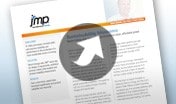Managing and monitoring 21 wildlife sanctuaries covering more than 2.5 million hectares adds up to millions of pieces of information to analyse and understand.
In the increasingly challenging fight to protect our planet’s natural environment for future generations, conservationists must clearly understand what is going wrong before they can consider and recommend potential remedies.
The first step in reaching that understanding is collecting data on our flora and fauna and a wide array of environmental attributes that are linked to their persistence and abundance. The second step is being able to analyse these data effectively to identify and understand trends, monitor their direction, and fix problems before they occur.
The volume of information accumulated by the Australian Wildlife Conservancy (AWC) over the years is enormous, and dealing with the deluge of information presents a challenge in its own right. The work of analysing it has now been accelerated by software tools such as JMP statistical discovery software from SAS, the leader in business analytics software and services, and the largest independent vendor in the business intelligence market.
JMP is being used by a team led by Dr. Sarah Legge, who is the AWC's National Conservation and Science Manager. She says of JMP, "I had worked with it before and so I was already a convert." She was also well aware of its beneficial use by the AWC's partner, The Nature Conservancy.
Founded in 2001, the Australian Wildlife Conservancy is a private, nongovernment organisation dedicated to the conservation of Australian wildlife and their habitats. It achieves this by:
- Establishing wildlife sanctuaries.
- Implementing on-ground programs such as feral animal control, fire management, and translocations of threatened species.
- Carrying out research to help address key threats to wildlife.
- Hosting educational visitor programs at the sanctuaries.
The organisation is funded largely by tax-deductible donations, and support from other private foundations, as well as government. Impressively, more than 90 percent of donations is spent on conservation programs in the field and less than 10 percent on fundraising and administration. Over three quarters of staff are based in the field.
AWC sanctuaries are spread across the nation in areas such as far north Queensland, The Kimberley, western New South Wales, The Northern Territory and the southern forests of Western Australia. In all, AWC’s 21 sanctuaries cover over 2.5 million hectares and are home to 60 percent of all Australian non-marine mammal species and 80 percent of all Australian mainland bird species.
One of the AWC’s sanctuaries – Mornington Wildlife Sanctuary – lies in the central Kimberley and protects over 330 different birds, reptiles, amphibians and mammals and more than 700 different plant species. Of these, nine bird species and six mammal species are considered by the state and federal governments as being in danger of extinction. Many of the vegetation communities in the sanctuary are not protected anywhere else.
Dr. Legge and her team have been gathering data on Mornington's wildlife for six years. One of their focal species is the Gouldian Finch – of which there are believed to be fewer than 2,500 adults remaining in the wild. Mornington protects one of the largest remaining populations of this exquisite bird.
Dr. Legge and her colleagues will use JMP to make meaning out of the large quantities of data collected, including population abundance, health trends and habitat use. The aim is to ensure the survival of this tiny and exotically colourful creature for future generations.
By utilising JMP, AWC researchers can expect to arrive at more reliable conclusions faster and more accurately than was previously possible.
This is because JMP gives users the ability to view and manipulate large quantities of data in a highly visual way. Complex and very large sets of numbers are transformed into easily digestible displays and analysis. Moreover, because the tools are robust, agile, simple and scalable, they are particularly ideal for the type of fieldwork in which the AWC is engaged.
In addition to focal studies on endangered species, data is also collected to measure the progress of land management programs such as fire management and weed and feral animal control.
Statistical discovery and analysis is also the starting point for translocation programs in which species are reintroduced into areas from which they had disappeared, once the threats to their survival have been adequately managed.
Dr. Legge sums up: "We can now make much better use of all the data we collect. SAS' statistical discovery tools give us the ability to interpret the data more clearly, and this will make us better equipped to address the threats to Australia’s wildlife. So SAS has now become a great supporter of biodiversity conversation here in Australia, as it is elsewhere in the world."
